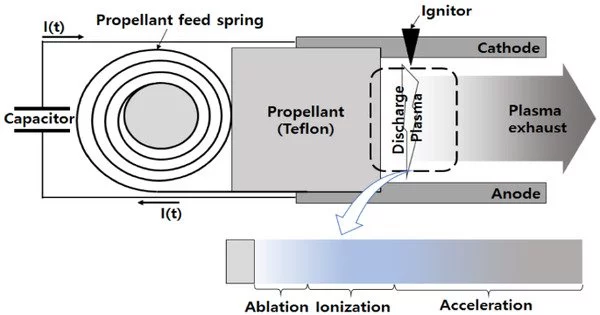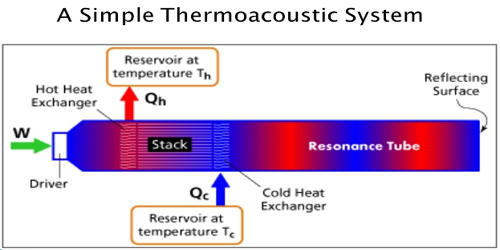A plasma jet engine, also known as a pulsed plasma thruster (PPT), is a type of electric spacecraft propulsion. It is an electric propulsion system used to propel spacecraft. PPTs are widely regarded as the most basic form of electric spacecraft propulsion, and they were the first to be flown in space on two Soviet probes (Zond 2 and Zond 3) beginning in 1964. It is classified as an electric propulsion system, which is any propulsion system that uses electrical energy to accelerate propellant and generate thrust. PPTs are typically flown on spacecraft with an excess of electricity generated by abundant solar energy.
Pulsed Plasma Thrusters generate and accelerate plasma, a state of matter composed of charged particles (electrons and ions). A PPT’s basic operation entails generating a plasma discharge by ionizing a propellant gas, typically a noble gas such as xenon or krypton. This is accomplished by passing a high-voltage electrical pulse through an electrode, ionizing the gas and creating plasma.
Once the plasma has been formed, a magnetic field is used to accelerate the ions in a specific direction, resulting in thrust. The accelerated ions are expelled at high speeds from the thruster, creating a propulsive force in the opposite direction.
Most PPTs use a solid propellant (typically PTFE, also known as Teflon), with very few using liquid or gaseous propellants. PPT operation begins with an arc of electricity passing through the fuel, causing ablation and sublimation of the fuel. The heat generated by this arc converts the resulting gas into plasma, resulting in a charged gas cloud. The plasma is propelled at a low speed between two charged plates (an anode and a cathode) as a result of the ablation force. The fuel effectively completes the circuit between the two plates because the plasma is charged, allowing current to flow through the plasma.
Advantages
There are several advantages and disadvantages to using pulsed plasma thrusters. Their simplicity, compact size, and high specific impulse (a measure of fuel efficiency) are some of their advantages. Because of their low power requirements and compact design, they are ideal for small spacecraft such as CubeSats or nanosatellites.
PPTs, on the other hand, have limitations. They usually have low thrust levels, making them unsuitable for larger spacecraft or missions that require a lot of thrust. Propeller consumption is also relatively high when compared to other electric propulsion systems such as ion thrusters. Furthermore, PPTs require high-voltage electrical pulses, which can cause problems with power management and electrical systems. Overall, Pulsed Plasma Thrusters are a subset of electric propulsion systems that are used for small spacecraft and specific mission requirements. They have benefits in terms of simplicity and compactness, but they have limitations in terms of thrust and propellant usage
















